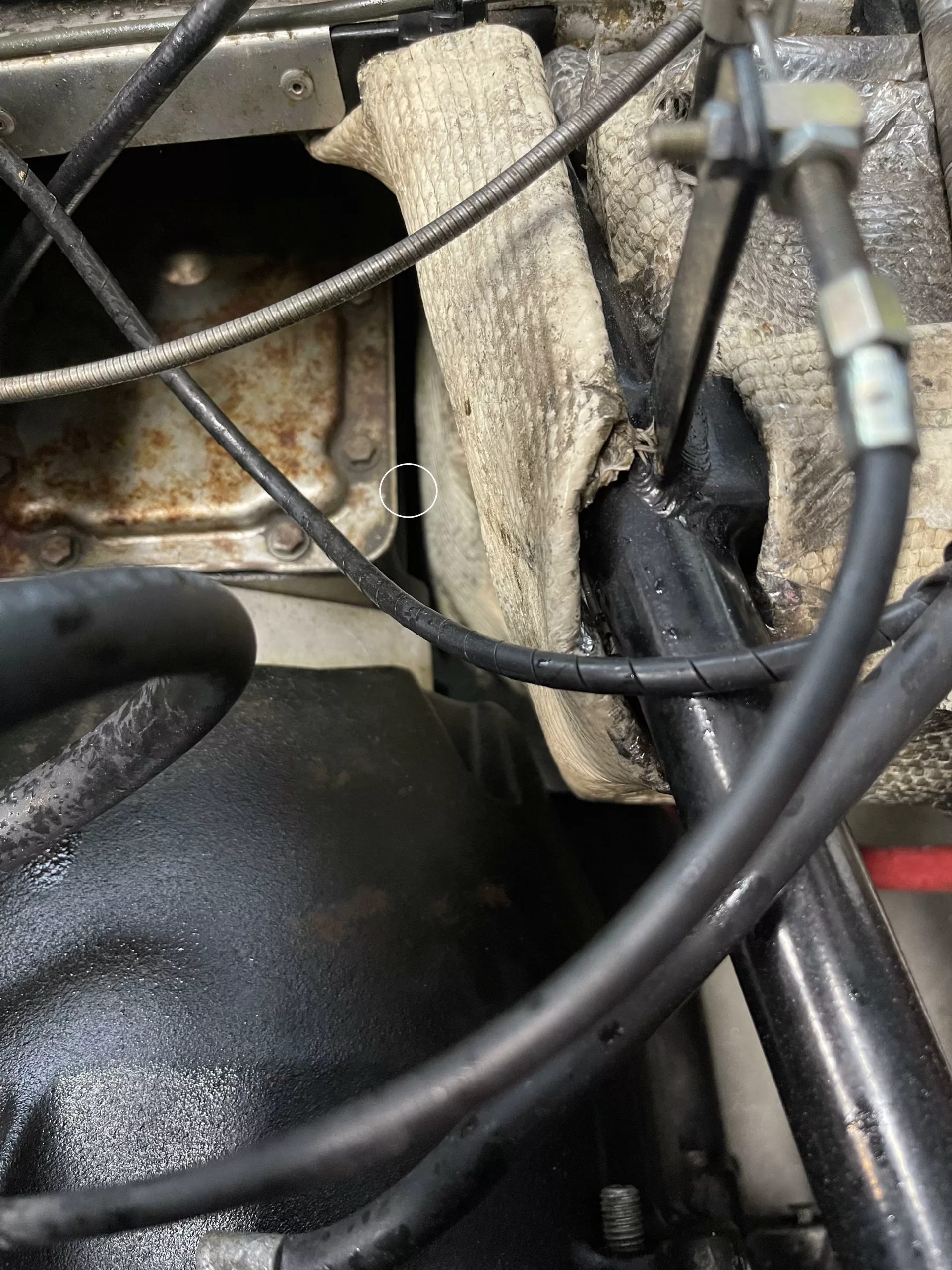Human nature is to be quiet about embarrassing things one has done. But last week Tom Tate shared his latest embarrassing experience with all of the Northeast Region. Emboldened by his brave act I will share mine and encourage others to do the same.
Being used to modern cars, I have assumed that if my garage floor doesn’t show puddles of fluid, all must be fine in the fluid department. In my two years of Caterham ownership, the garage floor had been squeaky clean. So all appeared to be good!
At last year’s final NER autocross, I was driving the Caterham through a fast left-hand sweeper when a loud bang under my seat revealed something serious had happened. I coasted to a stop off track and engaging gear resulted in no forward movement but loud banging and clanking. After getting the car pushed and towed to the pits, it was revealed that the left half shaft had self-destructed spectacularly.
I will not bore you with the difficulty of sourcing the correct parts for a Caterham since they are built with parts from other manufacturers; you have to thoroughly research that the part that you order, when you find a source, is the correct one.
The final background information I need to share is that after an earlier autocross, the adjuster on the front left damper adjuster appeared to be frozen. I contacted the manufacturer, and they authorized a return for warranty repair.
On to the main topic: I first removed the “frozen” damper from the car, a non-trivial task. After removal, I discovered that I had been attempting to soften the damper beyond the softest setting. Softening an already fully softened damper is difficult, I would even say impossible. In my defense, I will say that it is stiff and that I was concerned about making the “problem” worse. On re-installing the damper, I ran into an issue I had when replacing the dampers less than a year before. It is challenging to align the top control arm bolt that goes through the chassis bushing. You have to compress the suspension just right with a jack and then manipulate the bolt blindly through 5 holes that have to be perfectly aligned.
But there is more: I had finally procured the correct half shafts and started dismantling the rear end this spring. My mechanic friend and a constant source of advice had warned me that oil would come spilling out of the differential when I pulled the half shaft out. Well, it didn’t! After installing the half shaft, I removed the fill plug in the differential. It is magnetic and had a beautiful crown of steel shavings sticking out from the magnet. I topped up the differential fluid and now have a new winter project: rebuilding the differential. Maybe an earlier project if it fails completely. There is no bearing noise and just a bit of backlash, so there is hope.
Given this experience, I thought it might be a good idea to also check the gearbox oil level. This is really hard because the fill plug is in less than a one-inch gap between the gearbox and the footwell. To remove it, you have to cut down an Allen wrench so you can get it into the fill plug, loosen it, unscrew it by hand, use a transfer pump to fill the transmission and then go through the painful process of starting the fill plug by hand and tightening it with the cut-down Allen wrench. The good news is that the gearbox fluid was low but not nearly as bad as the differential, and there were no shavings on the magnetic fill plug.
Believe it or not, there is more: When removing the brake and wheel carrier, I had spilled some brake fluid on the floor, and that had been mixed with some oil that had run down the fill tube when the differential had been topped up. I bled the brakes and filled up the brake reservoir. The puddle on the floor would be cleaned when I got the car off the jack stands. This happened a few days later and I was ready to do a quick test drive. Unfortunately, the brake pedal bottomed out with no resistance. There was a brake fluid leak somewhere. Non-functional brakes are a really bad problem. Believing I knew exactly where the issue was, I started unscrewing the flexible fluid line that I had compressed with a vice grip to ensure that only minimal brake fluid leaked out. When I got to the bottom of the line, where it connects with a T that connects the flexible line with the two metal tubes that lead to the wheels, I could see that the bottom of the T was clean, so the leak was causing the fluid to drip down from there. It turned out, however, that the leak was not the flexible line but the metal tube leading to the side where I had replaced the half shaft. Moving it out of the way so I could remove the broken half shaft had loosened the connection at the T. I tightened them all up, re-bled the brakes, and two days later, the brakes were still hard and the reservoir full.
This story could have been a lot longer if I also described the issues I had run into along the way that required head-scratching, analysis, and repeating the same job multiple times. Just one example: When I assembled the brakes and attached the wheel that the new half shaft was attached to, the brake drum rubbed against the backing plate. Rubbing is an understatement; it absolutely refused to rotate. Had I just installed the wrong half shaft? The pundits on the Interweb had described how the newer half shafts should work on older models despite not being the exact same length. After messing around more than you will have the patience to read, I realized that the new wheel bearings were thinner than the old ones, and I needed to install a shim to make up for the difference. Fortunately, I have an industrial lathe in my basement and was able to turn one that fit perfectly. That is after I had turned one that was too thin. I am going to turn one of the same thickness and save it for when I replace the other half shaft.
Ahhhh, the joys of working on old cars!
-Anker Berg-Sonne



